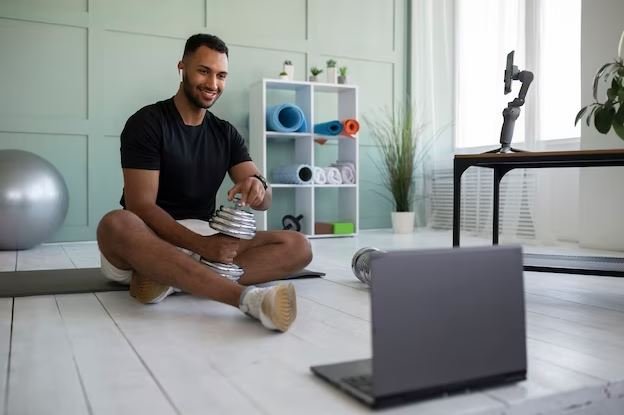In recent years, the concept of a home gym has gained popularity as people seek convenient and flexible ways to stay fit. Whether you’re a seasoned fitness enthusiast or just starting on your wellness journey, creating a home gym can be a game-changer. Here’s your ultimate guide to building a home gym that suits your needs, space, and budget.
1. Assess Your Space:
Before diving into purchases, assess the available space. Whether it’s a spare room, garage, or a corner in your living room, understanding your space constraints will help you plan the layout and choose equipment that fits seamlessly.
2. Set a Budget:
Establish a realistic budget based on your fitness goals and available funds. Home gym equipment varies widely in price, so having a budget ensures that you make cost-effective choices without overspending.
3. Choose the Right Flooring:
Invest in suitable flooring to protect your space and equipment. High-density foam mats, interlocking rubber tiles, or specialized gym flooring provide cushioning and protect both your floors and equipment from damage.
4. Essential Cardio Equipment:
Cardiovascular exercise is a crucial component of any fitness routine. Consider space-efficient options like:
- Treadmill: Ideal for walking, jogging, or running.
- Stationary Bike: Provides low-impact cardio.
- Elliptical Trainer: Combines lower and upper body workouts.
5. Strength Training Equipment:
Building strength enhances overall fitness. Equip your home gym with:
- Dumbbells: Versatile for various exercises.
- Kettlebells: Excellent for dynamic movements.
- Resistance Bands: Offer resistance for strength training.
- Adjustable Bench: Enables a variety of exercises.
6. Multi-Functional Home Gyms:
For those with more space and budget flexibility, multi-functional home gyms offer an all-in-one solution. These systems often include a variety of weight stacks, cables, and stations for comprehensive workouts.
7. Consider Storage Solutions:
Keep your home gym organized with storage for smaller items like resistance bands, yoga mats, and dumbbells. Wall-mounted shelves or racks can help maximize space.
8. Include Flexibility and Recovery Tools:
Enhance your recovery and flexibility with accessories like:
- Foam Roller: Aids in muscle recovery and flexibility.
- Yoga Mat: Perfect for stretching and yoga sessions.
- Massage Tools: Devices like massage balls or percussion massagers can alleviate muscle soreness.
9. Incorporate Technology:
Make your home gym experience interactive with fitness apps, virtual classes, or smart equipment. Many modern fitness devices offer connectivity to apps or have built-in screens for guided workouts.
10. Personal Touches:
Add motivational elements to make your home gym inviting. Mirrors, inspirational quotes, or your favorite workout music can create a positive atmosphere.
11. Safety First:
Invest in equipment that meets safety standards. If you’re unsure about the correct form or usage of certain equipment, consider consulting with a fitness professional or investing in a few personal training sessions.
12. Maintenance and Cleaning:
Regularly clean and maintain your equipment to ensure longevity. Dust and sanitize surfaces, and inspect moving parts for wear and tear.
Building a home gym is a significant investment in your health and well-being. Tailor it to your preferences, ensuring it’s a space that motivates and inspires you to achieve your fitness goals. As you progress, feel free to update and add equipment to keep your workouts diverse and challenging. With dedication and the right setup, your home gym can become the perfect space for achieving and maintaining a healthy lifestyle.



